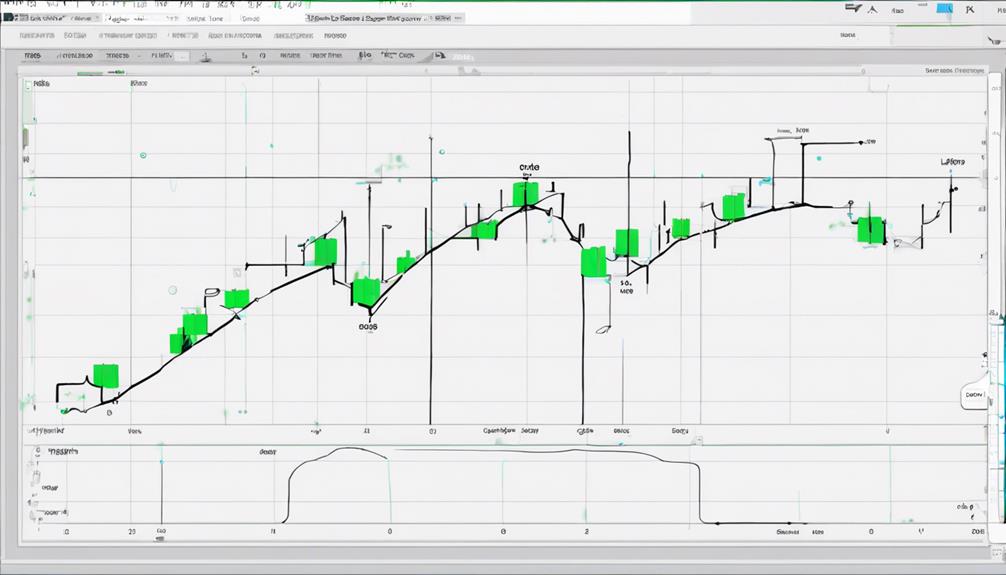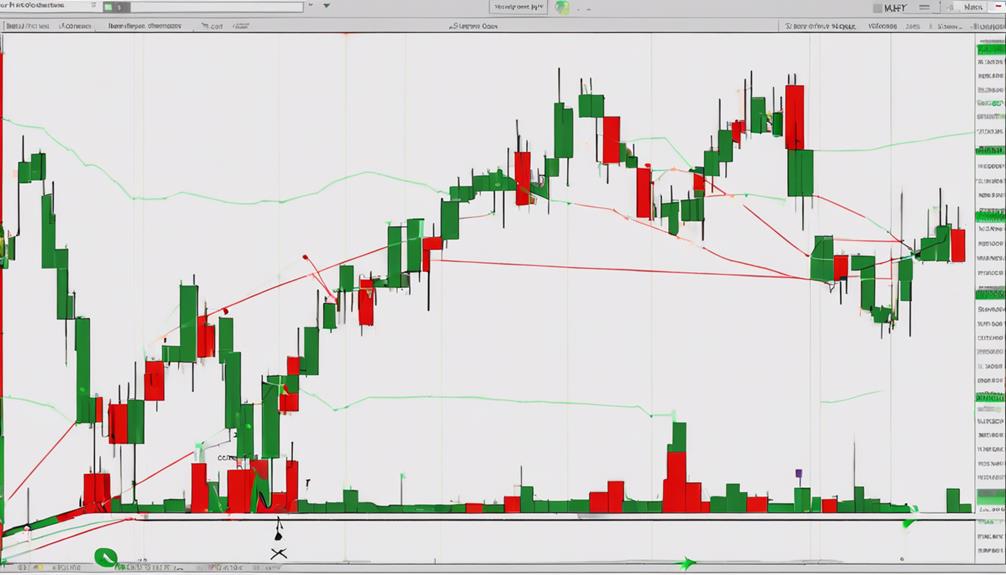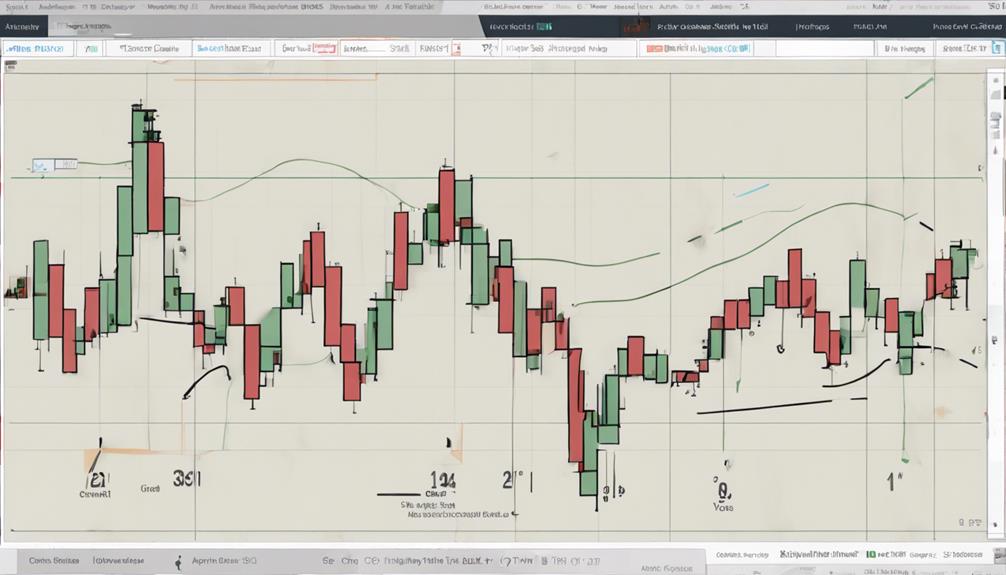So, you think you've mastered the Aroon Indicator, but are you truly utilizing it to its full potential?
There are five essential tips that could take your understanding to the next level and enhance your trading decisions.
From interpreting key signals to navigating through market phases, these strategies can make a significant difference in your trading outcomes.
Stay tuned to uncover the secrets that could elevate your Aroon Indicator game and set you on the path to trading success.
Understanding Aroon Indicator Calculation
When calculating the Aroon Indicator, you determine the time since the most recent high (Aroon-Up) and low (Aroon-Down) over a specified period, typically 25 days. The Aroon Up line and Aroon Down line are essential components of this indicator.
These indicator lines move in opposite directions, with the Aroon-Up measuring the number of days since the most recent high and the Aroon-Down measuring the days since the most recent low.
By analyzing these values, traders can identify potential trading signals and the strength of a trend. The Aroon Indicator provides valuable insights into the market's movements by comparing the time frames between the high and low prices.
Understanding these calculations is crucial for successful Aroon Indicator trading strategies.
Interpreting Aroon Oscillator Signals

To grasp the implications of Aroon Oscillator signals, one must comprehend how they stem from the crossovers between the Aroon-Up and Aroon-Down lines. When the Aroon-Up crosses above the Aroon-Down, it signifies a potential uptrend or bullish signal, suggesting a favorable time to consider entering a trade.
Conversely, if the Aroon-Down crosses above the Aroon-Up, it indicates a potential downtrend or bearish signal, signaling a possible exit point or a time to consider short positions. These crossovers serve as key components of this trading indicator, aiding in trend analysis and assisting traders in determining entry or exit points in the market.
Understanding Aroon Oscillator signals is crucial for identifying potential shifts in market direction and making informed trading decisions.
Recognizing New Trend Signals

Recognizing new trend signals plays a pivotal role in effectively utilizing the Aroon Indicator for informed trading decisions. Aroon-Up crossing above Aroon-Down signals a potential new uptrend, while Aroon-Down surpassing 50 with Aroon-Up below 50 indicates a possible downtrend. Aroon crossovers are crucial for identifying shifts in market trends, helping traders anticipate and capitalize on emerging market trends.
Monitoring Aroon readings enables timely entry and exit decisions during trend changes, enhancing the ability to profit from market movements. Understanding these trend signals is essential for staying ahead of evolving market conditions and making well-informed trading choices based on the Aroon Indicator's insights.
Identifying Market Consolidation Phases

During market consolidation phases, traders can leverage Aroon indicators to identify periods of indecision and potential price stability before anticipating market breakouts or reversals.
Market consolidation is recognized when both Aroon-Up and Aroon-Down are below 50, indicating a lack of strong trend direction. This phase is characterized by prices moving sideways within a trading range, reflecting equilibrium between buyers and sellers.
Aroon indicators below 50 signal flat prices and trading ranges, highlighting periods of price stability. Traders can utilize consolidation phases to prepare for potential breakouts or reversals by monitoring the Aroon indicator levels.
Understanding market consolidation helps traders avoid entering positions during uncertain price movements and wait for clearer trends to emerge, enabling more informed trading decisions.
Overcoming Aroon Indicator Limitations

One approach to addressing the limitations of the Aroon indicator is by incorporating complementary indicators such as moving averages to enhance signal accuracy and timeliness. By combining the Aroon indicator with moving averages, traders can better identify strong trends and filter out false signals, improving the effectiveness of their trading strategies.
Understanding how price action interacts with the Aroon indicator can assist in entering trades at optimal points, especially during strong trends. It's crucial to adjust Aroon settings based on market conditions to adapt to varying levels of volatility. By acknowledging and working around the weaknesses of the Aroon indicator, traders can better manage risks and make more informed trading decisions.
How Can I Use the Aroon Indicator to Navigate the Market More Effectively?
When using the Aroon Indicator, consider using a combination of the Aroon up and Aroon down indicators to identify potential trend changes. Look for crossovers between the two indicators as they can signal potential buying or selling opportunities. These tips for Aroon Indicator can help navigate the market effectively.
Frequently Asked Questions
What Is the Best Strategy for Aroon?
For the best strategy with Aroon, focus on Aroon-Up crossing above Aroon-Down for bullish signals. Identify entry and exit points using Aroon crossovers, complementing it with other technical tools for confirmation. Longer time frames enhance signal reliability.
How Do You Read an Aroon Indicator?
To read an Aroon indicator, track Aroon Up and Aroon Down lines. Values near 100 signal recent highs and a strong trend, while close to 0 imply weakness. Aroon Up above 50 with Aroon Down below 50 suggests price consolidation.
How Accurate Is the Aroon Indicator?
The Aroon indicator's accuracy varies based on market conditions and timeframe. It tends to be more precise in trending markets. Confirm signals with other indicators for reliability. Utilize multiple time frames for better accuracy.
Is the Aroon Indicator Leading or Lagging?
The Aroon Indicator is a leading indicator, not lagging. It anticipates price movements by tracking highs and lows, providing traders with insights into potential trend changes ahead of time for proactive decision-making.
Conclusion
In conclusion, mastering the Aroon Indicator involves understanding its calculation, interpreting signals, recognizing trends, identifying market phases, and overcoming limitations. By following these essential tips, you can navigate the Aroon Indicator effectively and improve your trading outcomes.
Remember to practice in a demo account, combine with other tools, and manage risks for success. Keep honing your skills, staying informed, and utilizing the Aroon Indicator strategically for optimal results in your trading endeavors.
